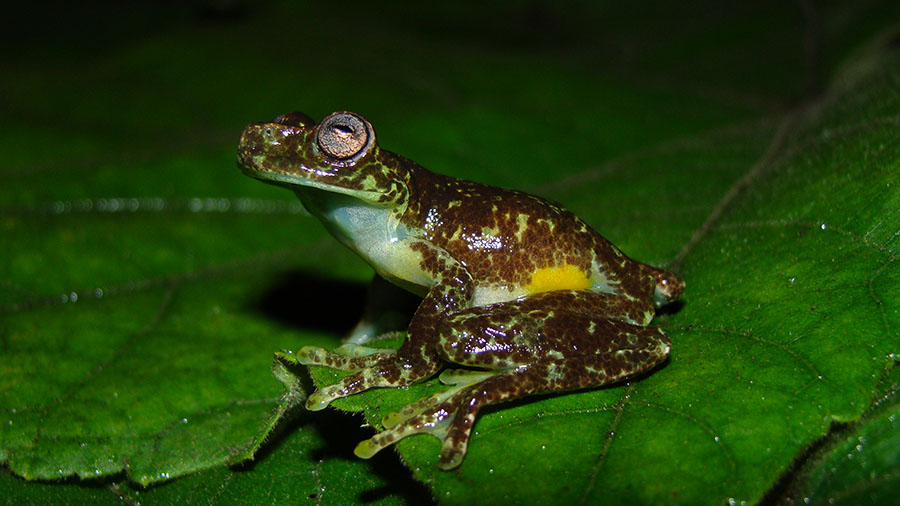By Lindsay Renick Mayer, Global Wildlife Conservation
From getting the right permits, to determining the right time of year, to traversing rough terrain in treacherous weather, to figuring out where to look, the search for lost species can, at times, present an impossible challenge. And sometimes when an animal is found, determining with 100 percent certainty that it’s the lost species in question can require some patience. That is especially true when the species in question is still a tiny tadpole.
Wildlife biologist Enrique La Marca and team have been monitoring amphibians in the Venezuelan Andes since the 1990s, soon after a number of frog species started mysteriously vanishing. This January, a team that had set out to do routine amphibian monitoring unearthed a few dozen tadpoles that turned out to belong to Jahn’s Tree Frog (Hyloscirtus jahni), a species that was last scientifically documented in March of 1991. “The finding of Jahn’s Tree Frog is a major discovery for conservation science, since this is the first time in decades that the species has been seen,” says La Marca, who is executive director at ASA partner Rescue of Endangered Venezuelan Amphibians (REVA).
Although La Marca and team are thrilled to have confirmed that Jahn’s Tree Frog is still around, their celebration has been tempered a bit by the winding path that took them from the discovery of the tadpoles to watching the 30 tadpoles they had collected for a REVA conservation breeding program morph into Jahn’s Tree Frogs. When the team originally discovered the tadpoles, they had very little morphological information to determine which species the tadpoles belonged to. They knew, however, that the tadpoles lived in a location once home to the long-lost Mérida Harlequin Toad (Atelopus oxyrhynchus), a species that has been lost for the past 26 years. Even though the range of the Jahn’s Tree Frog and Mérida Harlequin Toad overlap, given that the color, size and shape of the tadpoles more closely resembled the little that we know about the morphology of Mérida Harlequin Toads, the researchers were optimistic that the tadpoles in hand marked the rediscovery of the first of Venezuela’s seven lost harlequin toads.
But as the tadpoles began to grow back legs, they started to change color and grow surprisingly big, signaling to La Marca that the tadpoles belonged to Jahn’s Tree Frog, instead of the Mérida Harlequin Toad. This finding adds significant new information to our understanding of both Jahn’s Tree Frog and Mérida Harlequin Toad development.
“Even though we didn’t find the Mérida Harlequin Toad at this time, at REVA we are not dismayed. In all of these years that we’ve been monitoring populations of amphibians, we haven’t given up hope, and we don’t intend to do so now,” La Marca says. “Now we have a twofold challenge: to find the still-missing Mérida Harlequin Frog, and to rescue the now-found Jahn’s Tree Frog. We will continue to fight against the odds to find and conserve these animals, which are an important part of Venezuela’s incredible natural heritage.”
Read the full story here.
Photo © Fernando J.M. Rojas-Runjaic

